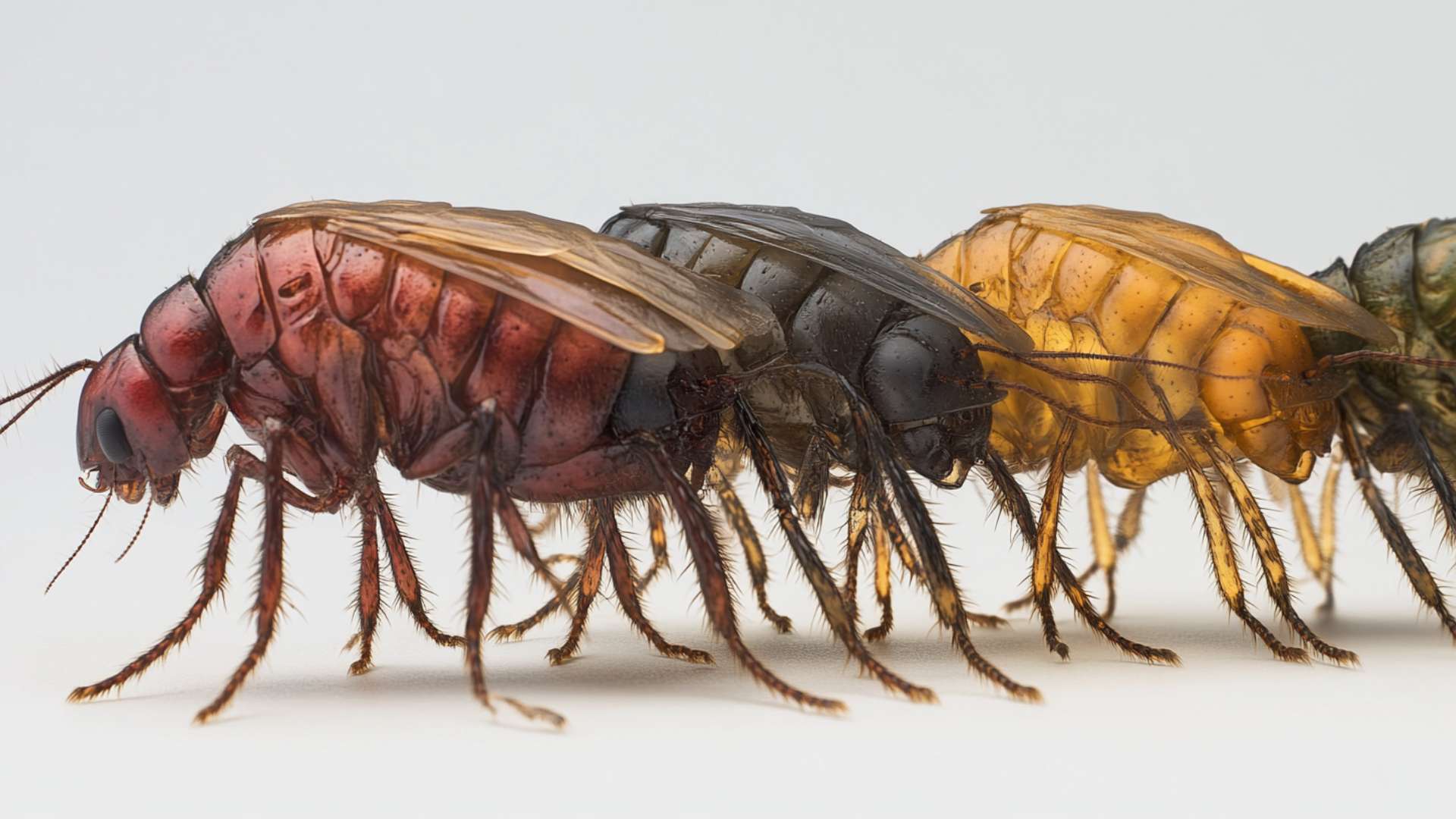Fleas are not just pesky nuisances that irritate our pets; they can also wreak havoc on our outdoor spaces. Proper flea control is crucial to maintain a healthy and enjoyable environment for both humans and animals alike.
Not only do fleas cause discomfort with their itchy bites, but they can also transmit diseases and parasitic worms. Additionally, fleas reproduce rapidly and can quickly become severe infestations of an entire yard if left unchecked.
To effectively control flea populations in outdoor areas, it is essential to understand the common species typically found in yards. The most prevalent types are the cat flea (Ctenocephalides felis) and the dog flea (Ctenocephalides canis).
Despite their names, these fleas infest both cats and dogs, as well as other mammals such as raccoons or squirrels that frequent your yard. Knowing the specific species of flea tick present will help tailor your approach to effectively killing fleas to combat their populations.
Overview of Common Flea Species Found in Yards
The cat flea (Ctenocephalides felis) is by far the most widespread species found in outdoor areas and yards across North America. These tiny insects measure about 1-2 millimeters long with dark reddish-brown bodies that are laterally compressed – perfect for navigating through dense fur or grasses. Cat fleas are highly adaptable pests that thrive on a wide range of hosts, making them a constant nuisance for pet owners.
Similarly, the dog flea (Ctenocephalides canis) is another troublesome species commonly encountered outdoors. They share many similarities with cat fleas but tend to be less abundant overall.
Dog fleas pose similar health risks as they have been known to transmit tapeworms and certain diseases. While both cat and dog fleas can infest pets, they may also bite humans, causing red, itchy welts on the skin.
Other less common flea species encountered in yards include the human flea (Pulex irritans) and the oriental rat flea (Xenopsylla cheopis). The human flea prefers to infest humans but can also target small mammals, while the oriental rat flea primarily targets rats but may jump onto other animals or humans in close proximity.
These species are usually associated with specific circumstances such as rodent infestations. Now that we have understood the importance of flea control in outdoor spaces and have been introduced to the prevalent flea species found in yards, let’s delve deeper into understanding their life cycle and how it influences their populations.
Understanding Flea Life Cycle
An Intricate Journey from Egg to Adult Flea
Fleas, those tiny and persistent creatures that wreak havoc on our pets and homes, undergo a fascinating life cycle consisting of four distinct stages: egg, larva, pupa, and adult. Let’s delve into each stage and unravel the intricacies of their development. Eggs: The flea life cycle begins when a female flea lays her eggs, typically on a host (our beloved furry friends) or in their surroundings—our yards included.
These minuscule white ovals can be found scattered throughout the environment where pets spend considerable time—your lawn, garden, or any cozy nooks they frequent. Considering that one adult female flea can lay up to 50 eggs per day, it’s easy to see how quickly an infestation can take root.
Larvae: Once hatched from the eggs within 1-12 days (depending on environmental conditions), flea larvae emerge hungry for sustenance. They are blind but possess an exceptional sense of touch to navigate through grass or other outdoor surfaces.
Preferring dark areas with ample humidity and organic matter like decaying leaves or soil crevices, they feed on various matter such as tiny food particles or even the droppings left behind by adult fleas. This stage typically lasts around 5-11 days as larvae molt several times during this period.
Pupa: Transforming into pupae marks a pivotal moment in the flea life cycle—a seemingly dormant phase that protects them within silken cocoons spun by larvae. Pupae possess remarkable survival instincts as they await favorable conditions before emerging as adults.
Environmental factors like vibration and carbon dioxide (signals indicating potential hosts nearby) play significant roles in prompting adult fleas to emerge from their cozy cocoons. Adult Fleas: Finally, adult fleas emerge from their pupal cases fully developed and ready to cause mischief.
These blood-sucking pests possess the incredible ability to jump great distances, allowing them to latch onto unsuspecting hosts—a talent that has earned them a notorious reputation. From this point on, they engage in a host-seeking frenzy, often landing on our pets or even us as we tread through infested areas.
Factors Influencing Flea Population Growth in Outdoor Areas
Understanding the factors that contribute to flea population growth in outdoor spaces is crucial for effective control. While fleas thrive in various environments, certain conditions can either impede or facilitate their development and reproduction.
Climate: Fleas flourish in warm and humid climates, making summer months particularly enticing for their breeding activities. However, fleas can also adapt to survive in colder conditions by seeking shelter indoors or within animal fur.
Presence of Hosts: Flea populations may fluctuate depending on the availability of hosts like cats, dogs, rodents, or other animals. Abundant hosts translate into abundant opportunities for fleas to feed and reproduce.
Favorable Outdoor Habitats: Flea larvae prefer dark and humid environments where they’re shielded from direct sunlight. Areas with organic debris like fallen leaves, grass clippings, or dense vegetation provide ideal hiding spots for larvae while waiting to transform into pupae.
Inadequate Pest Control Measures: Incomplete or ineffective flea control measures offer these pests an open invitation to establish themselves comfortably outdoors. Insufficient flea treatment and methods may fail to address all stages of the flea life cycle—leading to ongoing infestations.
By understanding the intricacies of the flea life cycle and recognizing factors that influence their population growth outdoors, we can better tailor our efforts towards combating these persistent parasites effectively. With a comprehensive approach that considers environmental conditions and proper pest control methods, we can make our outdoor spaces less inviting for fleas to thrive.
Identifying Flea Infestation Signs in Yards
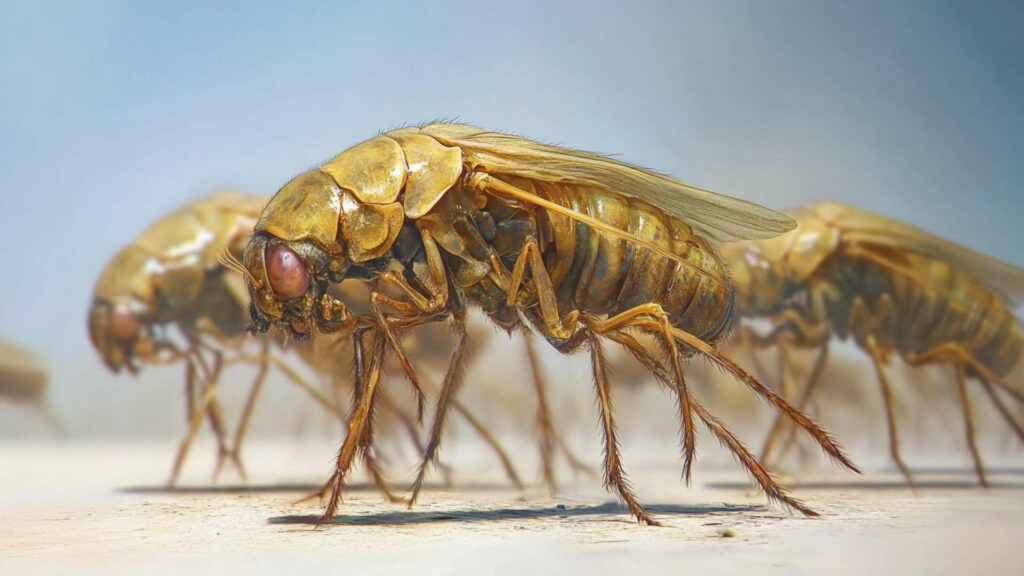
Recognizing typical symptoms in pets and humans
When it comes to identifying a tick or flea infestation in your yard, paying attention to your pets and loved ones is crucial. Our furry friends are the first to suffer from those pesky little critters.
If you notice your pet incessantly scratching or biting their fur, it could be a strong indication that fleas have invaded their personal space. Keep an eye out for hair loss, redness, or small scabs on their skin as well.
Humans can also experience flea bites, usually appearing as small red dots with an itchy sensation. These bites often occur around the ankles and lower legs, but they can also appear on other exposed areas of the body.
Visual cues like flea dirt, bites, and hotspots
Visual cues are another telltale sign of a flea infestation in your yard. Flea dirt is the feces of fleas and looks like small black specks resembling ground pepper. If you suspect flea dirt, take a damp white paper towel or cloth and rub it across the area where you suspect the presence of fleas.
If black or reddish smears appear on the cloth or paper towel, it’s likely to be flea dirt. Additionally, inspecting both your pet’s fur and outdoor surfaces for signs of bites is important.
Flea bites often appear as clusters of small red bumps with a central puncture mark caused by the flea’s mouthpart. Pay close attention to areas with thinner fur such as the belly or inner thighs.
Furthermore, keep an eye out for hotspots in your yard where fleas tend to congregate and reproduce more rapidly. These hotspots are usually warm and shaded areas such as under thick vegetation or near shrubs where moisture accumulates easily.
Remember that early detection is key to preventing a full-blown flea infestation, so stay vigilant and address any signs of flea tick you observe promptly. Next, we will discuss natural methods for controlling fleas in outdoor areas to help you tackle these pesky insects without resorting to harsh chemicals or harmful pesticides.
Natural Methods for Controlling Fleas Outdoors
Utilizing Beneficial Nematodes to Target Fleas in Soil
When it comes to combating fleas in your outdoor areas, beneficial nematodes can be your secret weapon. These microscopic creatures are a natural predator of fleas and can effectively reduce their population in the soil. But how do they work?
Let’s delve into their life cycle and behavior. Beneficial nematodes are tiny roundworms that are harmless to humans, pets, and plants but pose a serious threat to flea larvae lurking in the soil.
Once applied to the infested area using a garden hose or sprayer, these beneficial nematodes seek out flea larvae by sensing their body heat and carbon dioxide emissions. Once in contact with flea larvae, the beneficial nematodes release a bacterium that infects and kills them within 48 hours.
This prevents fleas from reaching adulthood and reproducing, ultimately breaking the life cycle of these pesky parasites. It’s like nature’s ultimate defense mechanism against fleas!
Application Techniques for Maximum Effectiveness
To ensure maximum effectiveness while applying beneficial nematodes, there are a few essential tips to keep in mind. Firstly, it’s important to treat your yard with nematodes during warm weather when soil temperatures range between 42°F (5°C) and 90°F (32°C). This ensures optimal activity levels for both the nematodes and flea larvae.
Before application, make sure your lawn is moist but not waterlogged. Watering the area lightly prior to treatment will help create favorable conditions for the nematodes’ mobility underground.
Use a garden hose or sprayer attachment designed specifically for applying beneficial nematodes evenly across your yard. It’s recommended that you mix the nematode solution with warm water as per package instructions before distributing it evenly over the infested areas.
Follow the manufacturer’s guidelines regarding application rates to achieve the desired level of flea and tick control throughout. Remember, consistency is key to ongoing control, so repeat the treatment as recommended to maintain its efficiency throughout the flea season.
Implementing Companion Plants with Natural Repellent Properties
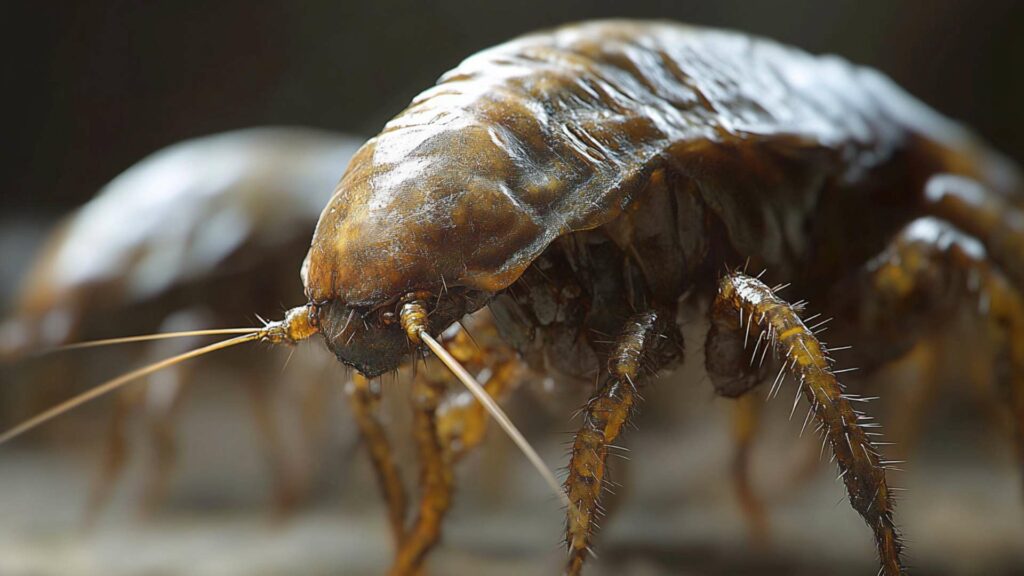
Did you know that certain plants possess natural properties that repel fleas? By incorporating these companion plants into your yard landscaping, you can create a fragrant and flea-discouraging haven. Let’s explore some popular options and how they can help in your battle against fleas.
Lavender: This delightful purple plant not only enhances the aesthetics of your yard but also serves as a potent natural flea and tick repellent. Fleas detest its strong aroma, making lavender an excellent choice for controlling these pests.
Plant lavender strategically around your outdoor sitting areas or near entry points to discourage fleas from gaining access. Rosemary: Another herb with exceptional flea-repellent properties is rosemary.
Its woody scent acts as a natural deterrent for fleas and ticks while adding an aromatic touch to your garden. Plant rosemary in sunny spots or use cuttings to create a natural barrier around specific areas that are prone to infestation.
By incorporating these fragrant companion plants into your yard, you create an environment that naturally repels fleas and adds beauty to your outdoor space at the same time. Furthermore, they provide an eco-friendly alternative to chemical-based solutions while contributing positively to your overall garden ecosystem.
Remember that planting companion plants alone may not eradicate existing flea populations entirely but can work synergistically with other methods in controlling their numbers effectively. Consider combining these plantings with other techniques mentioned earlier for comprehensive and long-term flea control in your outdoor areas.
Chemical Approaches to Outdoor Flea Control
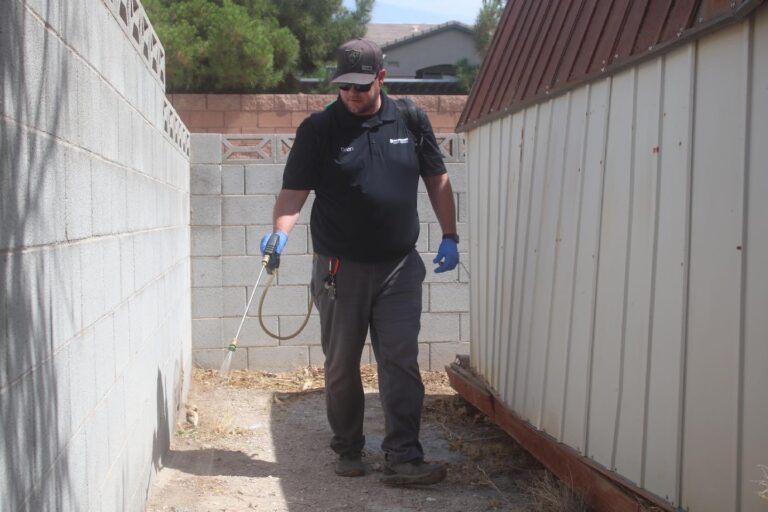
Overview of insecticides specifically formulated for outdoor use
When it comes to tackling a flea infestation in your yard, chemical insecticides can be an effective solution. There are various types of insecticides, including sprays, granules, and foggers that are specifically formulated for outdoor use.
These products are designed to target fleas and other pests lurking in your yard’s foliage or hiding away in crevices. They provide a potent defense against these pesky insects and help you reclaim your outdoor space from the clutches of these bloodthirsty nuisances.
Types: sprays, granules, foggers
Sprays, granules, and foggers are three common types of insecticides used for outdoor flea control. Sprays come in liquid form and can be applied directly onto the areas where fleas are prevalent. By thoroughly spraying infested locations such as grassy areas or shady spots under bushes or decks, you can effectively target not only adult fleas but also their eggs and larvae.
Granular insecticides consist of tiny pellets that release chemicals when applied to your lawn or garden. These pellets penetrate the soil and kill fleas at different life stages by disrupting their feeding habits or interfering with their reproductive cycle.
By spreading granules evenly across your lawn using a spreader device or by hand (while wearing gloves), you can create a barrier that repels fleas while keeping your pets and family safe. Foggers, also known as bug bombs, are useful for treating large areas quickly.
These aerosol cans release fine mist containing insecticide that fills the air within the treated area, repelling fleas. Foggers provide effective coverage against fleas in hard-to-reach places like sheds, garages, or dense vegetation where fleas love to hide.
Application methods and safety precautions
When applying outdoor insecticides, it is important to follow the instructions provided by the manufacturer. Before applying any product, wear protective clothing such as gloves and a mask to prevent skin or respiratory irritation.
Remove all pets and children from the spray-treated area until the insecticide has dried completely. For sprays, ensure that you cover all surfaces thoroughly, including grass, plants, fences, and decking.
Pay close attention to shaded areas where fleas tend to hide during the day. It’s also crucial to apply granules evenly across your yard using a spreader or by hand (with gloves) while avoiding excessive runoff into water sources.
When using foggers, make sure that all windows and doors are closed tightly before activating the canister. Leave the home spray the treated area immediately after releasing the fogger and allow sufficient time for it to disperse safely before re-entering the house.
Exploring long-lasting residual insecticides
Long-lasting residual insecticides are specifically designed to provide extended protection against fleas as well as other pests like ticks and mosquitoes. These products contain active ingredients such as harmful chemicals such as pyrethroids which not only kill adult fleas but also disrupt their life cycle by inhibiting their ability to reproduce. Residual insecticides are typically available in spray form and can be applied directly onto surfaces where fleas may reside, including lawns, patios, fences, or shrubbery.
They form a protective barrier that remains effective for several weeks after application. Proper application techniques involve thorough and complete coverage of infested areas while minimizing contact with non-target organisms and beneficial insects like bees or butterflies.
Always read the label carefully for specific instructions regarding dilution ratios (if applicable) and appropriate waiting periods before allowing pets or children back into treated areas. By utilizing these chemical approaches wisely and following safety precautions diligently, you can effectively combat flea infestations in your outdoor areas without posing any harm to your beloved pets or your family’s well-being.
Tips for Preventing Reinfestation
Maintaining a Clean Yard through Regular Lawn Mowing
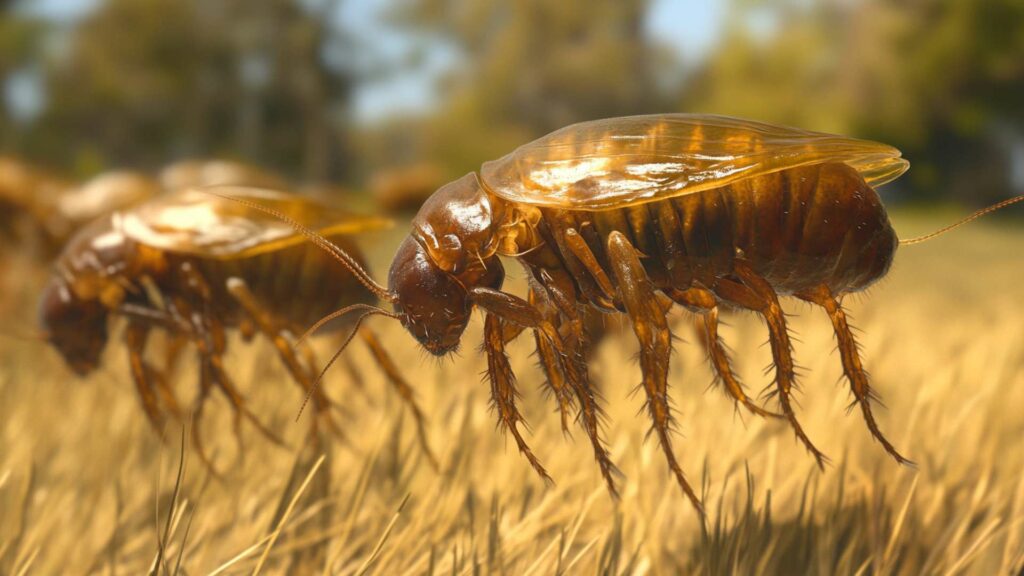
To keep your yard free from fleas, regular lawn maintenance is essential. Fleas thrive in tall grass and shaded areas where there is less sunlight. By mowing your lawn on a consistent basis, you can significantly reduce their hiding spots and disrupt their lifecycle.
Aim to mow the grass to a height of around 2-3 inches as this makes it less inviting for fleas to make themselves at home. Additionally, consider using a bagging attachment while mowing to collect any fallen leaves or debris that may serve as potential flea habitats.
Removing Potential Flea Habitats (e.g., Leaf Piles)

Fleas are crafty little critters that love to hide in cozy spots like leaf piles and garden debris. To prevent reinfestation, it’s important to remove these potential flea havens regularly.
Rake up any fallen leaves and dispose of them properly by either composting or bagging them for disposal. Remember not to leave piles of grass clippings or other organic matter lying around your yard, as they can also provide ideal breeding grounds for fleas.
Protecting Pets
Your pets are the primary target for those pesky fleas, so protecting them is crucial in preventing reinfestation. Start by routinely inspecting your pets’ fur for any signs of fleas or flea dirt—those tiny black specks that look like pepper flakes. Regular grooming with a fine-toothed comb can help catch any adult fleas and remove them from your pet’s coat before they have a chance to lay eggs in your yard.
Consider using plant-based flea shampoos or gentle soap products specifically designed for pets that effectively kill fleas without exposing them to harsh chemicals like sodium lauryl sulfate. Additionally, consult with your veterinarian about the use of flea-preventive treatments and medications to keep your pets safe from fleas.
Conclusion
By following these simple yet effective tips for preventing reinfestation, you can create a flea-free haven in your outdoor areas and yards. Regular lawn mowing not only keeps your yard looking neat but also removes potential hiding places for fleas. Clearing away leaf piles and garden debris further reduces the chances of fleas finding a cozy home in your yard.
And, most importantly, protecting your pets with regular grooming and appropriate flea preventatives ensures that they don’t become carriers and bring fleas back into your home and yard. Remember, maintaining a clean outdoor space is not only crucial for preventing fleas but also for minimizing the presence of other pests and insects like ticks and mosquitoes.
By adopting these cost-effective measures, you can achieve effective flea control for outdoor areas and yards while creating a safe environment for both you and your furry friends to enjoy throughout the whole year round. So get out there, take charge of your yard’s flea defense, and reclaim your space from these stubborn little pests!
Get rid of fleas with D-Termination: The top pest control service in Las Vegas!

If you’re dealing with flea problems on your Las Vegas property, turn to D-Termination for assistance. Our expert team excels in eliminating flea infestations and restoring comfort and peace to your space. Say farewell to fleas—opt for D-Termination for effective pest control today!
Contact us at 702-919-6310 or visit dtermination.com to schedule your flea control service and reclaim your space from these bothersome pests.
Frequently Asked Questions:
The most effective outdoor treatment for fleas includes insecticides, nematodes, and diatomaceous earth.
To get rid of fleas outside your yard, use outdoor insecticides, treat pet resting areas, and maintain a well-groomed yard.
Optimal treatment for fleas in the garden involves using natural predators like nematodes, applying diatomaceous earth, and keeping the area well-maintained.
The strongest flea killer includes prescription medications like Bravecto, Comfortis, or products containing fipronil. Consult a vet for the best option for your pet.

